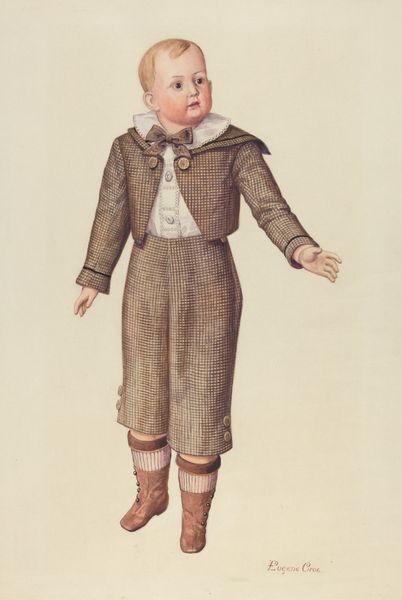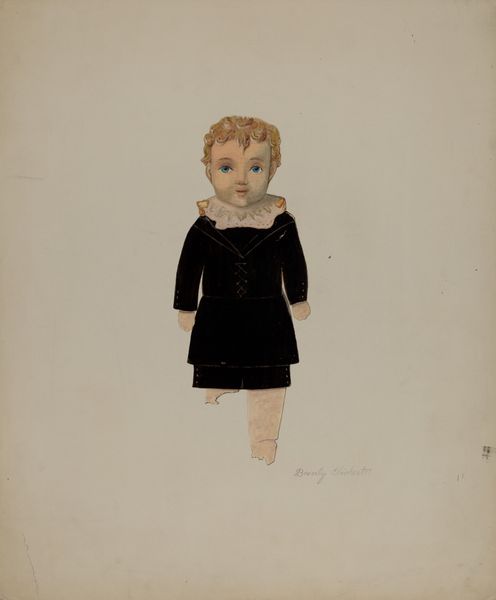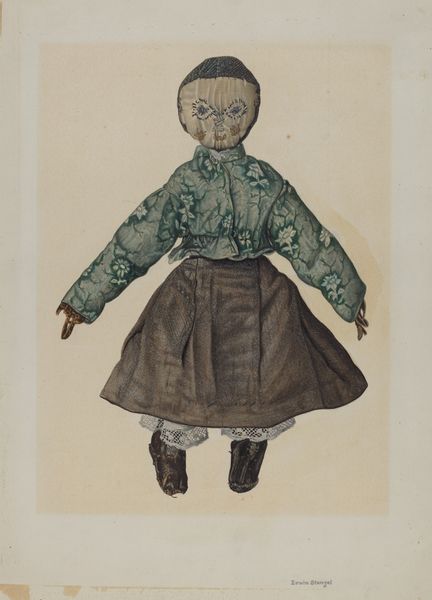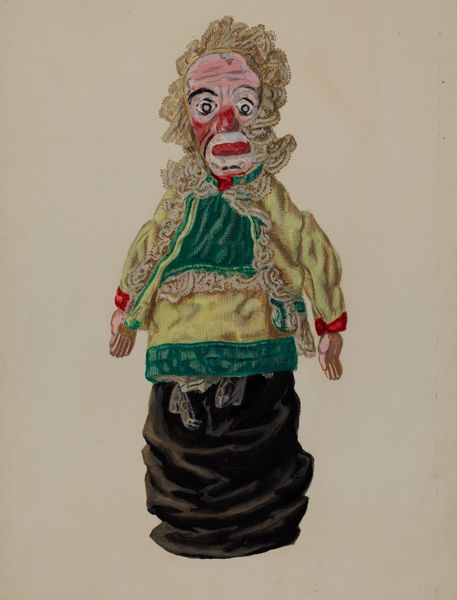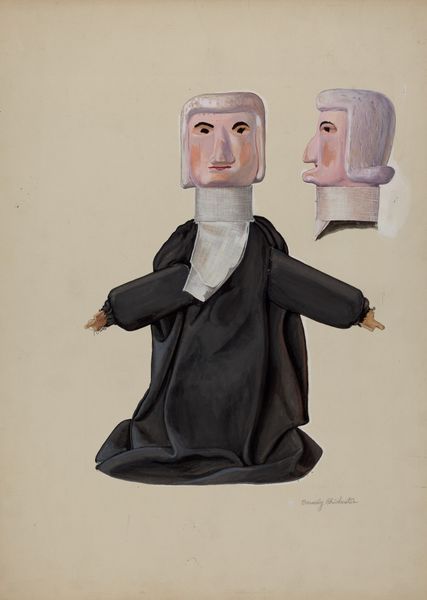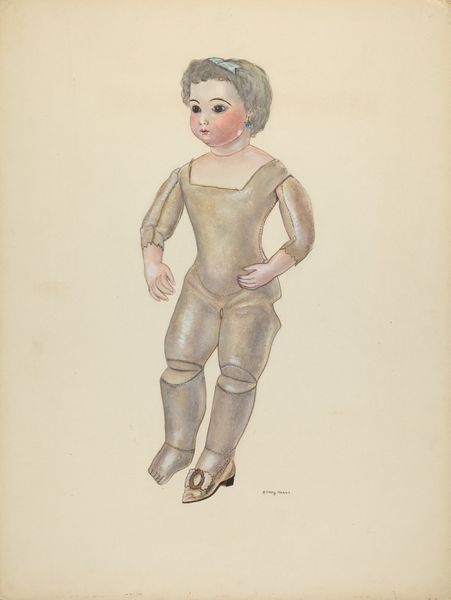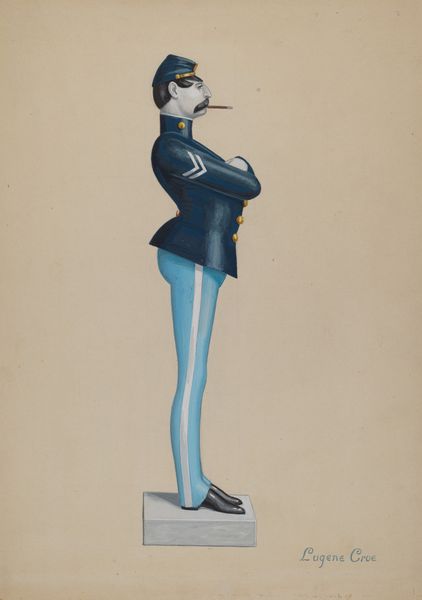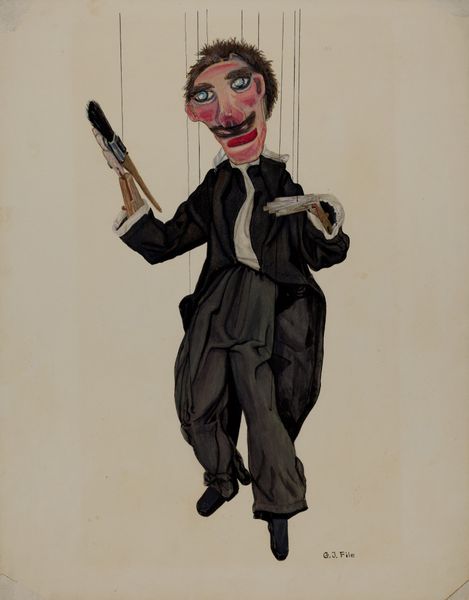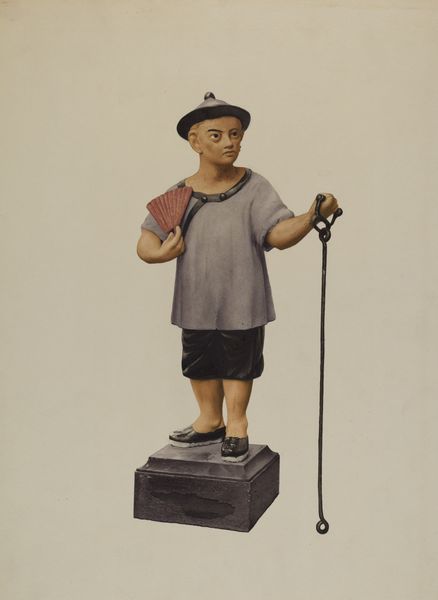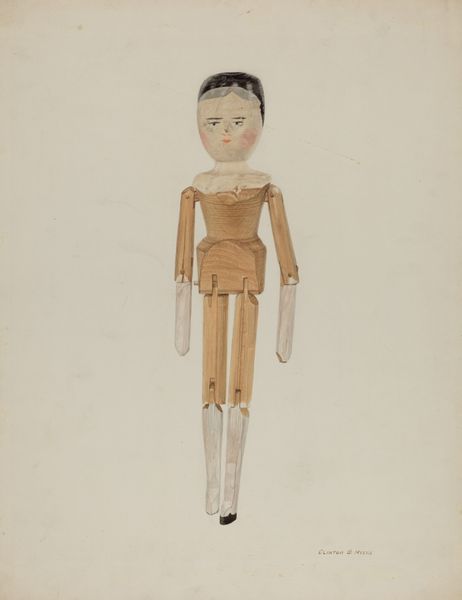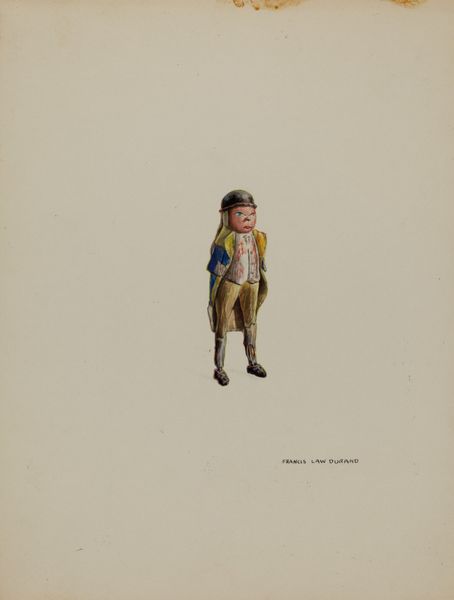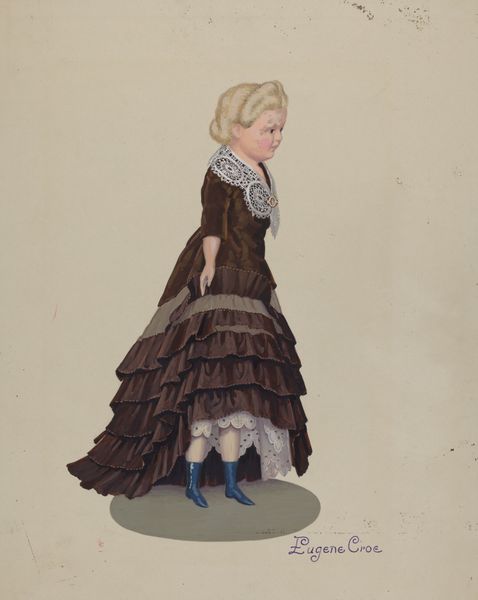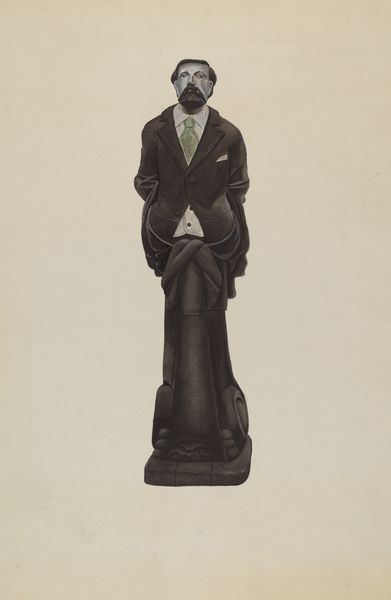
drawing
#
portrait
#
drawing
#
figuration
#
historical fashion
#
academic-art
#
fine art portrait
Dimensions: overall: 30.9 x 24.5 cm (12 3/16 x 9 5/8 in.) Original IAD Object: 18" high
Copyright: National Gallery of Art: CC0 1.0
Curator: Today we're looking at Eugene Croe's "Boy Doll," a drawing from around 1937. Editor: My first impression? A little melancholic, wouldn’t you say? The figure, centrally positioned, is oddly formal for what I’d expect of a childhood portrait. Curator: It's the formal qualities that strike me, certainly. The composition, though simple, presents a rigorous exploration of line and form. Observe how the sharp edges of the clothing contrast with the smooth, rounded features of the doll's face. It creates an interesting visual tension. Editor: Interesting tension, yes, but it's unsettling. A boy, rendered as an inanimate object, reflecting the expectations of childhood during that era –the social constraints on boys' behaviour and appearance? It almost seems a critique of how society "dresses up" its children. Curator: Or simply capturing the style of dress typical for children during this historical period, evidenced by the tailored velvet suit, and the lacy collar – elements meticulously rendered. The textures, even in two dimensions, possess a tactile quality, demanding we acknowledge the materiality. Editor: True, but consider the racial implications. Why this particular model? The choice echoes broader societal power structures that normalize whiteness as the standard for beauty and innocence, further obscuring other voices. Who dictates which children become objects of aesthetic and social value? Curator: Your point is taken. But let us return to the pure formalism: the controlled palette; the subtle gradations of light. It's academic art at its most competent. The artist focuses our attention on geometric planes: consider the perfect rectangles of the stand versus the near circles implied at the sleeves. Editor: Those 'geometric planes' also flatten lived experience, reduce humanity to simple form. What gets lost when art only mirrors 'competence', as you say, and forgets to challenge our perspectives, our embedded prejudices? Curator: Perhaps Croe wanted viewers to fill the blanks with their perspectives, or he could simply intend to picture in two dimensions a cultural artifact from a given timeframe, focusing on details of dress. It gives the viewer space for reflection regardless. Editor: Indeed, food for thought about representation, intention and interpretation. Let's move on.
Comments
No comments
Be the first to comment and join the conversation on the ultimate creative platform.
